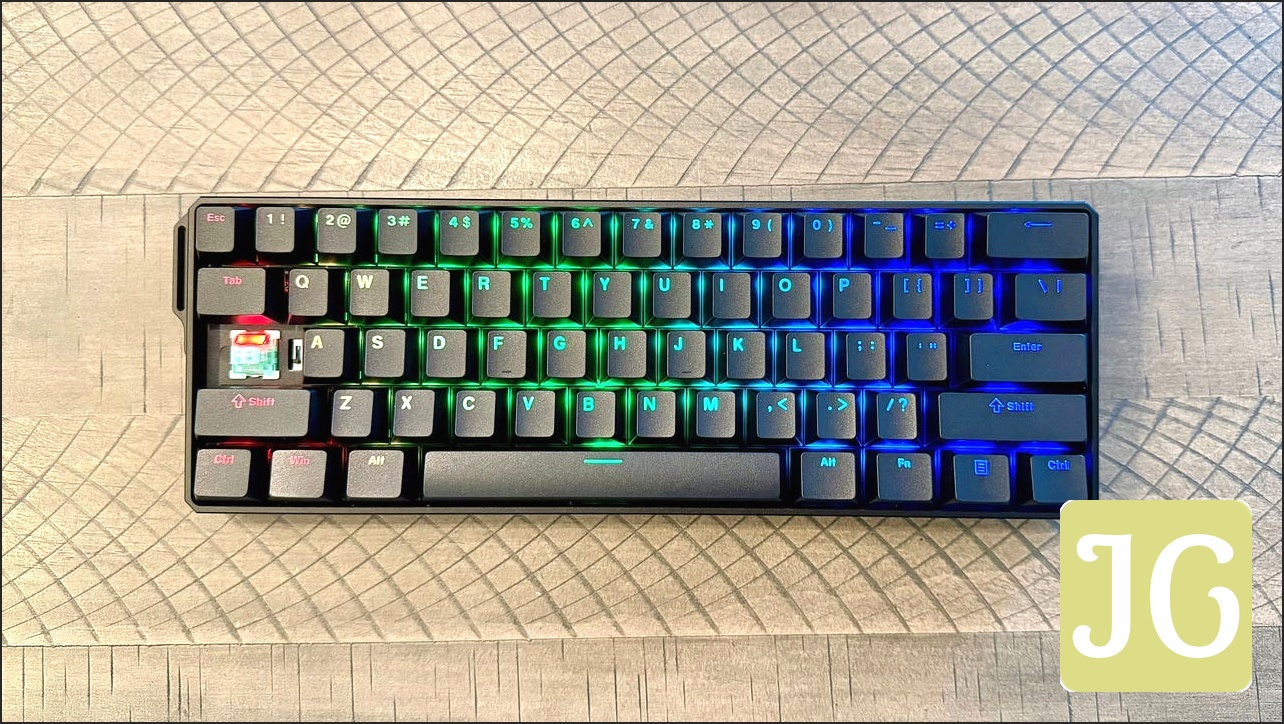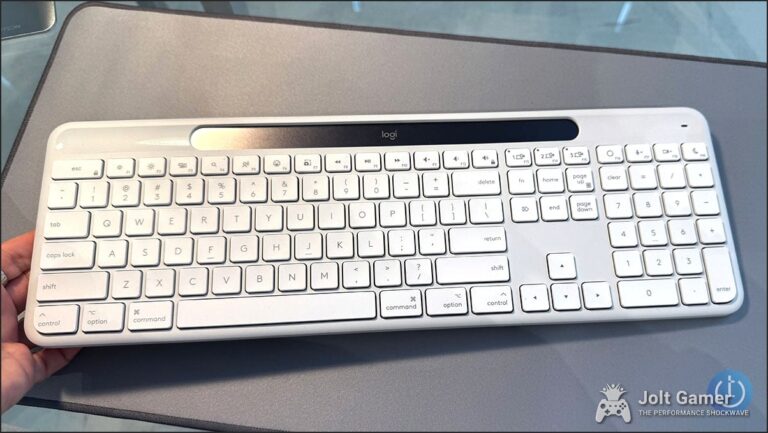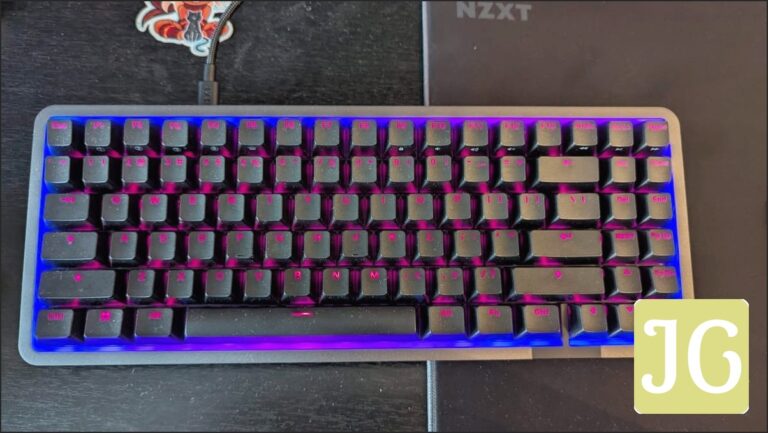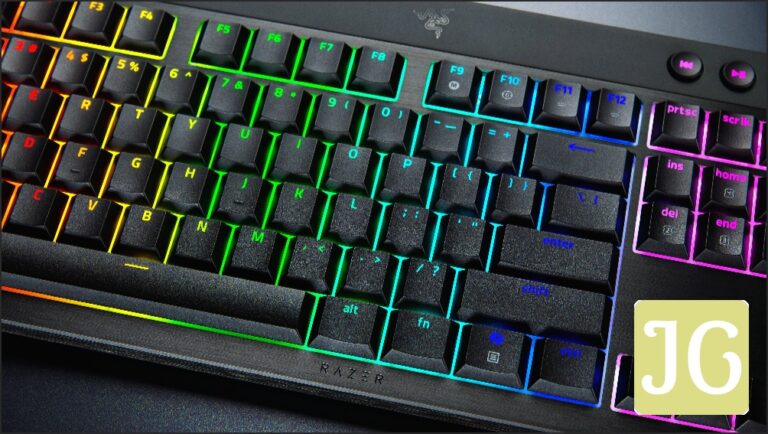The Apex Input: Why Your Keyboard is Your New Competitive Edge
In the relentless pursuit of competitive advantage, every millisecond counts. For years, mechanical keyboards reigned supreme, offering satisfying tactility and reliable, albeit binary, input. But a new era has dawned, one where magnetic fields and quantum tunneling are redefining what’s possible. Hall Effect (HE) keyboards have already revolutionized input, offering unprecedented speed and customization that translate directly into in-game performance. Now, Tunnel Magnetoresistance (TMR) technology is emerging, promising even greater precision and lower power consumption. But is TMR truly the next big leap, or just a marginal gain for the most discerning few? This definitive JoltGamer guide cuts through the marketing hype to explain what these cutting-edge technologies are, how they work, and most importantly, how they can tangibly impact your K/D ratio and competitive standing.
Understanding the Core: How Advanced Switches Redefine Input
Before diving into the specifics of Hall Effect and TMR, it’s essential to grasp the fundamental shift from traditional mechanical switches. Standard mechanical switches rely on a physical contact point to register a keystroke, making them a binary input: either fully on or completely off. While robust and familiar, this design inherently limits response speed and customization. Advanced switches, however, introduce ‘analog’ input, much like a game controller’s trigger. This allows them to detect the full range of a key’s travel, enabling nuanced control and opening up a world of possibilities for precision and dynamic command previously unseen on a keyboard.
- Mechanical Switches: Physical contact for actuation, fixed trigger points, resulting in binary (on/off) input. Reliable but limited.
- Optical Switches: Utilize light beams for contactless actuation, offering faster response than mechanical, but often still binary or with limited analog capabilities.
- Induction Switches: Employ ferrous metal and PCB-mounted sensors for contactless detection. Theoretically offer consistent production and lower power consumption.
- Hall Effect Switches: Leverage magnets and sensors to detect the precise travel distance of a key. This contactless method provides true analog input and highly customizable actuation points.
The Hall Effect Revolution: Precision, Speed, and Durability
Hall Effect technology, though its underlying principle was discovered by Edwin Hall in 1879, has been ingeniously adapted for modern gaming keyboards to deliver a tangible competitive edge. Instead of physical contacts, each Hall Effect switch contains a magnet at its base and a sensor on the keyboard’s PCB. As a key is pressed, the magnet moves closer to the sensor, altering the magnetic field. This change is precisely detected and translated into a digital signal. This contactless actuation is the bedrock of its profound advantages for gamers:
- Unparalleled Durability: No physical contacts mean no wear and tear. Hall Effect switches boast lifespans exceeding 100 million keystrokes, far outlasting traditional mechanical switches and maintaining consistent performance over years of intense gaming.
- Lightning-Fast Response: Contactless sensing allows for extremely low trigger points and instantaneous signal detection, crucial for competitive play where every millisecond matters. This translates to quicker reactions in high-stakes moments.
- Analog Accuracy: The ability to detect the full range of key travel (e.g., 0.1mm to 4.0mm) enables features previously exclusive to game controllers, providing granular control over movement and actions.
- Quieter Operation: The absence of metal leaves or pins results in a generally smoother and quieter keypress compared to many mechanical types, which can be a boon for streamers or late-night gaming sessions.
- Adjustable Actuation: Users can precisely define the key’s activation point (e.g., 0.1mm to 3.8mm in 0.1mm increments). This allows for tailoring sensitivity to specific games – ultra-light for twitch shooters, or deeper for typing accuracy – offering a true competitive edge.
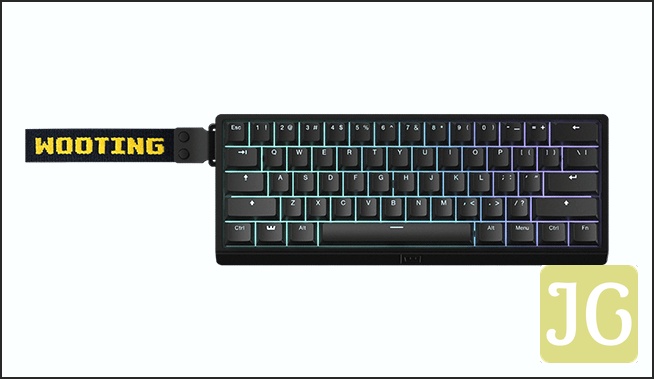
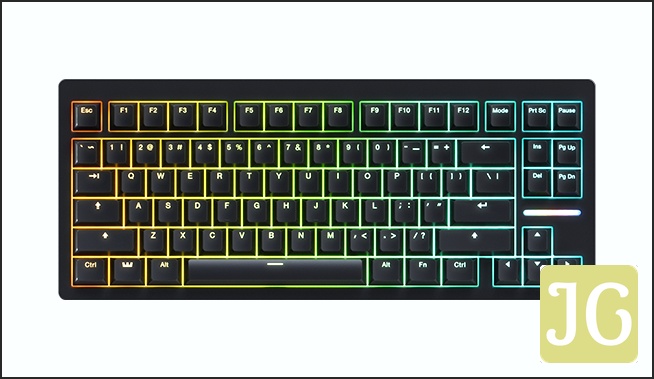
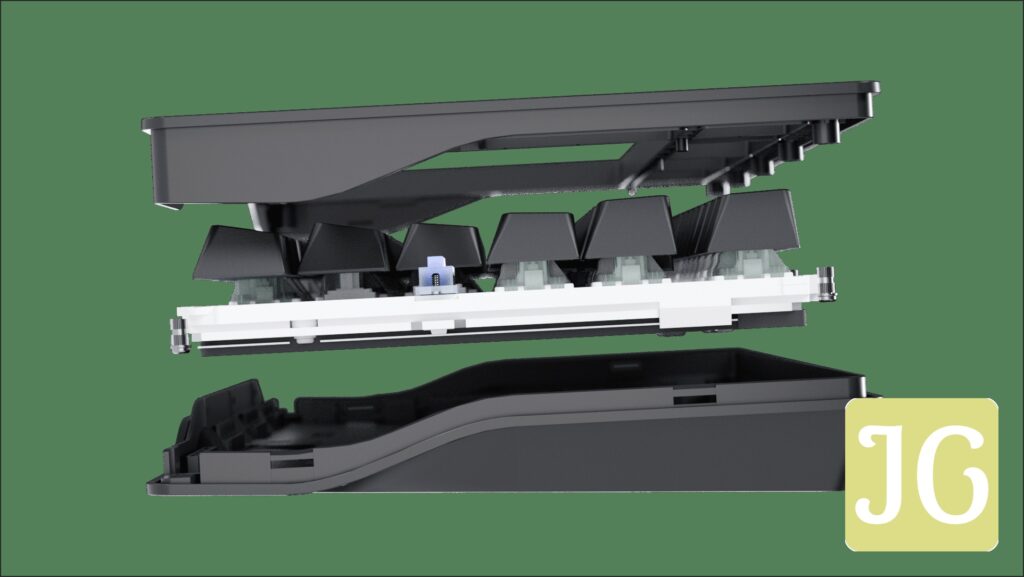
Leading the Charge: Notable Hall Effect Keyboards
The Hall Effect market is thriving, with several brands pushing the boundaries of what’s possible. Wooting, often credited with popularizing modern HE technology and its competitive features, continues to innovate with models like the 80HE, which we’ll dive deeper into.
- Wooting 80HE: Widely regarded as Wooting’s ‘most complete keyboard yet,’ this 80% layout powerhouse features Lekker Switch V2s, true 8kHz polling for an astounding 0.125ms latency, per-key adjustable actuation, and the industry-leading Rapid Trigger. Its refined gasket-mount design, complete with a PC plate and various dampening layers, ensures superior sound and typing feel. Plus, it champions sustainability with PCR ABS plastics.
- Keychron K2 HE / Q5 HE: Keychron offers a compelling blend of high-end features and value. The K2 HE is a 75% wireless marvel, boasting Gateron double-rail magnetic switches and a CES Innovation Award. For those needing a numpad, the Q5 HE provides a 96% layout with a premium CNC aluminum case and Gateron Double Rail switches, delivering a satisfying, robust feel.
- SteelSeries Apex Pro TKL: This globally recognized best-seller utilizes exclusive OmniPoint switches, allowing for precise actuation adjustment. SteelSeries claims 5x faster actuation and an 8x faster response time, further enhanced by its intuitive OLED Smart Display for on-the-fly information.
- EPOMAKER HE68 Lite: A compact 65% option packing serious competitive features. It offers 0.01mm adjustable actuation, an 8K polling rate with a 128KHz scan rate for 0.125ms latency, alongside Dynamic Keystroke (DKS), Mod Tap (MT), and Snap Key (SOCD) functions, all housed within a 5-layer sound-dampening design.
- Logitech G Pro X TKL Rapid: A strong contender in the TKL space, this board is noted for its robust performance, Lightspeed wireless, and solid reviews, including a respectable 86% from PC Gamer.
Wooting 80HE Key Specifications
- Layout
- 80%
- Switches
- Lekker Switch V2 (L45/L60), Hall effect, 100M clicks lifespan
- Polling Rate
- True 8kHz (keyboard scanning & USB)
- Latency
- 0.125ms
- Actuation Range
- 0.1mm to 4.0mm (0.1mm steps)
- Key Features
- Adjustable Actuation, Rapid Trigger, Rappy Snappy, Gasket Mount, PC plate, Silicone sandwich pad, PET film ‘tape mod’, EPDM foam
- Materials
- 65% PCR ABS plastic (top/bottom case), Zinc alloy option
- Connectivity
- Wired (USB-C)
- Software
- Wootility (onboard, Windows, macOS, Linux, web browser)
- Dimensions
- 346 x 142mm
- Weight
- 790g (ABS) / 2160g (Zinc alloy)
The TMR Challenger: Monsgeek’s Quantum Leap?
Just as Hall Effect has matured and established its dominance, a new contender is entering the arena: Tunnel Magnetoresistance (TMR). Monsgeek, a sub-brand of AKKO, has launched the FUN60 Ultra TMR, boldly claiming it as the first keyboard to integrate this cutting-edge technology. TMR goes beyond traditional Hall Effect by leveraging ferromagnetism and quantum tunneling to deliver what it claims is superior precision in key press registration. It detects even the slightest movements faster by sensing magnetic field changes without requiring perfect alignment, promising not only enhanced resolution but also lower power consumption compared to Hall Effect switches.
- Superior Precision: TMR’s advanced sensing claims to detect minute magnetic field changes with higher resolution, boasting a precise 0.01mm Rapid Trigger accuracy. This could translate to even finer control in competitive scenarios.
- Lower Power Consumption: Potentially offers better battery life compared to Hall Effect switches, a significant benefit for wireless enthusiasts.
- Faster Registration: Capable of detecting slight movements faster due to less stringent alignment requirements, theoretically reducing input latency further.
- MagMech Technology: The FUN60 Ultra TMR uniquely allows for simultaneous use of magnetic and standard 5-pin mechanical switches via hot-swappable sockets, offering unparalleled flexibility in switch choice.
- North-Facing LEDs: A design choice that contrasts with the South-facing LEDs common in Hall Effect designs. While offering brighter illumination for some keycaps, it can impact compatibility with certain cherry-profile keycaps.
Monsgeek FUN60 Ultra TMR Key Specifications
- Layout
- 60%
- Switches
- Akko Glare Magnetic Switches (TMR), MagMech hybrid hot-swappable
- Polling Rate
- 8000Hz
- Latency
- 0.6ms wired, 1.1ms wireless
- Actuation Range
- 0.1mm to 3.4mm (0.01mm RT accuracy)
- Key Features
- Rapid Trigger, Snap Key, Dynamic Keystroke (DKS), Toggle Key, Mod-Tap, SOCD, CNC aluminum case, Tray-mounted, ARGB, North-facing LEDs
- Materials
- CNC-machined aluminum
- Connectivity
- Tri-mode (USB-C wired, 2.4GHz wireless, Bluetooth)
- Software
- Web-based driver (Chromium-based browser)
- Dimensions
- 11.48 x 3.91 x 1.56 inches (approx.)
- Weight
- 2.4 pounds (aluminum body)
- Battery
- 4,000mAh (up to 200 hours w/o RGB, 11 hours with RGB)
Head-to-Head: Hall Effect vs. TMR – Is the Hype Real?
The introduction of TMR technology naturally begs the question: how does it truly stack up against the established, battle-tested performance of Hall Effect? While TMR claims superior precision and lower power consumption, the real-world, perceptible difference for the average competitive gamer remains a significant point of contention within the community. The Fandom Pulse, our internal sentiment tracker, reveals considerable skepticism, with many questioning if TMR offers a tangible, game-changing advantage over the already excellent Hall Effect boards that currently dominate the market.
Hall Effect vs. TMR: A Quick Comparison
| Feature | Hall Effect (HE) | Tunnel Magnetoresistance (TMR) |
|---|---|---|
| Sensing Method | Magnets & Hall effect sensors | Ferromagnetism & quantum tunneling |
| Precision Claim | High (0.1mm actuation) | Superior (detects slightest movements, 0.01mm RT accuracy) |
| Power Consumption | Standard for magnetic switches | Claimed lower |
| Switch Compatibility | Often proprietary (e.g., Lekker V2, Gateron HE) | Monsgeek MagMech allows hybrid (magnetic + 5-pin mechanical) |
| LED Orientation | Typically South-facing | Typically North-facing |
| Market Adoption | Widespread, many models | Emerging (Monsgeek FUN60 Ultra TMR) |
| Community Sentiment | Established, highly valued | Curiosity mixed with skepticism about practical gains |
“Unless you need your keyboard wireless, TMR is a bit pointless. Having mixed mech + TMR switches on 1 keyboard is pretty niche. With how good Hall effect boards are now, the range of sizes, huge variety of switches, etc, just get yourself a HE keyboard.”
Beyond the Switch: Features That Truly Elevate Your Game
While the underlying switch technology is undeniably crucial, it’s the advanced features built upon Hall Effect and TMR that truly unlock their competitive potential. These are the functionalities that translate raw sensor data into tangible in-game advantages, enabling faster reactions and more precise control:
- 1. Rapid Trigger (RT): The Game Changer: Originally pioneered by Wooting in 2019, and popularized with the 60HE in 2022, Rapid Trigger dynamically adjusts a key’s activation and deactivation points. Instead of waiting for a full key release, RT resets the moment you lift your finger by a customizable distance (e.g., 0.1mm). This allows for instantaneous key resets and re-actuations, providing a significant, tangible edge in FPS games for rapid movements, lightning-fast counter-strafing, and precise stutter peeking. It’s also invaluable in rhythm and fighting games for frame-perfect inputs. Crucially, Wooting famously chose not to patent this technology, leading to its widespread adoption by major brands like Razer, SteelSeries, and Corsair, cementing its status as an industry standard.
- 2. Adjustable Actuation: This feature allows you to fine-tune the precise keypress depth required for activation. You can set it from an ultra-sensitive 0.1mm for lightning-fast reactions in shooters, to a deeper 3.8mm to prevent accidental presses during intense moments or for more accurate typing. This customization is often per-key, allowing for incredibly tailored profiles across different games and applications.
- 3. Dynamic Keystrokes (DKS) / Dual Key Stroke: Imagine assigning up to four different actions to a single key based on how far it’s pressed. For instance, a light press could initiate walking, while a deep press triggers a sprint, all on one key. This streamlines complex inputs, freeing up other keys and improving reaction times.
- 4. Mod-Tap & Toggle Key: These features enhance efficiency by reducing hand repositioning. Mod-Tap allows a single key to perform one function when tapped (e.g., ‘Ctrl’) and another when held (‘Shift’). Toggle Key continuously triggers an action with a tap, or acts as a regular press when held, making complex sequences simpler and faster.
- 5. SOCD (Simultaneous Opposing Cardinal Directions) Resolution: This feature resolves conflicting directional inputs (e.g., pressing left and right simultaneously). While controversial and banned in some competitive games (like CS2) due to perceived unfair advantages, it can enable advanced movement techniques, such as instant counter-strafing, by prioritizing the last input or a specific direction.
- 6. Ultra-High Polling Rates: While 1,000Hz (1ms) is the standard for high-performance keyboards, advanced HE/TMR boards push this to 8,000Hz (0.125ms), aiming to minimize input lag to an imperceptible level. However, it’s worth noting that overall system synergy – how well the sensor, firmware, and USB connection work together – is often more critical than raw polling rate alone.
Rapid Trigger: A Wooting Legacy
Wooting pioneered Rapid Trigger, first introducing it in 2019 and later shipping it with the 60HE in 2022. Their decision not to patent the technology has allowed it to become a staple across the industry, enhancing competitive play for countless gamers.
The Wireless Debate: Convenience vs. Performance
Wireless Hall Effect and TMR keyboards are becoming increasingly common, offering the allure of a clean, clutter-free desk setup and increased portability. However, the competitive gaming community remains sharply divided on their necessity and potential drawbacks. While high-performance 2.4GHz wireless connections can achieve polling rates comparable to wired (often 1,000Hz or even 8,000Hz with TMR), Bluetooth typically operates at significantly lower rates (125-250Hz), making it generally unsuitable for the demands of competitive gaming.
Wireless Gaming Keyboards: Pros & Cons
Pros
- Clutter-free desk setup, enhancing aesthetics and reducing cable management headaches.
- Increased portability and flexibility, useful for LAN parties or multi-device setups.
- High-performance 2.4GHz connections can match wired polling rates (e.g., 8,000Hz for the Monsgeek FUN60 Ultra TMR), offering minimal perceptible lag.
- Multi-device Bluetooth connectivity for versatility across different machines (though typically at a lower polling rate unsuitable for competitive play).
Cons
- Requires regular charging (e.g., Monsgeek FUN60 Ultra TMR: 11 hrs with RGB, 200 hrs without), adding another device to your charging routine.
- Potential for increased input lag if not utilizing a high-performance 2.4GHz connection, or if interference occurs.
- Battery degradation over time, impacting the keyboard’s overall lifespan and consistent performance.
- Lack of integrated dongle storage on some models (e.g., FUN60 Ultra TMR), increasing the risk of misplacing it.
- Community skepticism regarding the practical ‘need’ for wireless in a stationary peripheral that rarely leaves the desk.
“I never understood who would actually NEED a wireless keyboard. It’s not a mouse, you’re not moving it around that much. The only reason is if you hate cables for some reason and love charging 10 devices once in a while.”
Build Quality, Customization, and the Software Ecosystem
Beyond the groundbreaking switches, the overall build quality, extensive customization options, and the accompanying software greatly influence the user experience and, ultimately, your performance. Premium Hall Effect and TMR keyboards often feature robust materials, advanced mounting systems, and comprehensive software suites that tie everything together.
- Premium Materials: Robust construction is key to longevity and feel. CNC-machined aluminum (found in the Monsgeek FUN60 Ultra TMR and Keychron Q5 HE) or aircraft-grade aluminum (SteelSeries Apex Pro TKL) provide rigidity and a premium, unyielding feel, preventing unwanted flex during intense gaming sessions. Even Wooting’s 80HE utilizes 65% PCR ABS plastic for a high-quality, sustainable chassis.
- Gasket Mounts: Advanced mounting systems like the Wooting 80HE’s silicone gasket mount absorb impact, significantly reduce noise, and provide a pleasant, cushioned typing feel, contributing to both comfort and acoustics.
- Sound Dampening: To refine acoustics and achieve that desirable ‘thock’ sound, internal foams (such as EVA or EPDM), silicone pads, and even ‘tape mods’ (as seen in the Wooting 80HE) are strategically incorporated to dampen vibrations and quiet keypresses.
- Hot-Swappable Switches: While many HE/TMR keyboards utilize proprietary switches, some, like the Monsgeek FUN60 Ultra TMR with its innovative MagMech technology, offer the unique flexibility to swap between magnetic and standard 5-pin mechanical switches, catering to diverse preferences.
- Keycaps & Stabilizers: Durable PBT keycaps (Double Shot or Dye Sub) are common for their resistance to shine, finger oils, and fading legends, ensuring longevity. Pre-lubed screw-in stabilizers are crucial for enhanced feel and reduced rattle, providing a consistent and satisfying keypress across all larger keys.
- Software Ecosystems: Comprehensive tools like Wooting’s Wootility, Keychron’s Launcher, NZXT CAM, and Monsgeek’s web-based driver are absolutely essential. These platforms allow for managing every advanced feature – from adjustable actuation points and rapid trigger sensitivity to DKS, macros, and vibrant RGB lighting profiles. Often onboard or web-based, they ensure broad compatibility and convenience.
Pricing & Value: Justifying the Investment
Hall Effect and TMR keyboards generally come at a higher price point than their traditional mechanical counterparts. This premium, however, is often justified by the advanced sensor technology, the extreme durability that promises years of reliable performance, and the extensive, game-changing customization capabilities they offer. It’s an investment in a tangible competitive edge. The market is typically segmented into three tiers:
- Entry-Level ($100-$150): These boards offer basic adjustable actuation and the core benefits of Hall Effect, but may compromise on build materials or limit access to the most advanced features like per-key Rapid Trigger.
- Mid-Range ($150-$250): This tier strikes a strong balance, providing excellent switch quality, high polling rates, durable builds, and flexible software that unlocks a good range of advanced features.
- Premium Tier (>$250): Here, you’ll find keyboards with multi-point actuation, ultra-high polling rates (often 8kHz), superior chassis construction (CNC aluminum or steel), and typically the most comprehensive software and support. This is where you invest for the absolute top-tier competitive experience.
The JoltGamer Verdict: Is TMR the Future, or is Hall Effect Still King?
Our journey through the cutting-edge landscape of next-gen keyboard technology reveals a vibrant and rapidly evolving arena. Hall Effect keyboards, championed by innovative brands like Wooting, Keychron, and SteelSeries, have firmly established themselves as the go-to choice for competitive gamers seeking an undeniable edge in speed, precision, and durability. Features like Rapid Trigger, finely adjustable actuation, and dynamic keystrokes offer clear, tangible advantages that can genuinely improve your in-game performance and reaction times.
TMR technology, as seen in the pioneering Monsgeek FUN60 Ultra TMR, undoubtedly presents an intriguing evolution in magnetic sensing. While its claims of superior precision and lower power consumption are compelling on paper, the practical, perceptible difference for most gamers over a well-implemented Hall Effect board remains to be definitively proven. The community’s skepticism is valid: for many, the current generation of Hall Effect keyboards already offers a near-perfect competitive edge, and the added complexity or niche features of TMR may not justify an immediate switch for a marginal, if any, real-world gain.
Hall Effect: The Proven Champion. TMR: The Promising Challenger.
For the vast majority of competitive gamers, Hall Effect keyboards remain the undisputed champion. Their mature technology, widespread adoption, and proven features like Rapid Trigger deliver a tangible competitive edge that is hard to beat. TMR is a fascinating development, pushing the boundaries of magnetic sensing, but it’s currently a niche offering that needs to demonstrate more significant, perceptible advantages to truly dethrone Hall Effect. If you’re looking for the absolute best competitive input right now, a top-tier Hall Effect board is your safest bet. If you’re an early adopter fascinated by cutting-edge tech and willing to explore, TMR offers a glimpse into the future.
Wooting 80HE
Price Range: Pre-orders available (campaign concluded at €7,452,597)
Release Status: Now available for normal pre-orders
Where to Buy: Wooting Official Website
Monsgeek FUN60 Ultra TMR
Price Range: $103.99 – $159.99
Release Status: Currently available for purchase
Where to Buy: Monsgeek Official Website, Amazon, Aliexpress
Frequently Asked Questions (FAQ)
What is the main difference between Hall Effect and mechanical switches?
Hall Effect switches use magnets and sensors for contactless actuation, allowing for adjustable actuation points and rapid trigger, and offering superior durability. Mechanical switches use physical contacts, resulting in fixed actuation points and potential wear over time.
What is Rapid Trigger and why is it important for gaming?
Rapid Trigger dynamically adjusts a key’s activation and deactivation points, allowing keys to reset instantly upon a minimal lift, without needing a full release. This significantly improves response times for rapid movements, counter-strafing, and quick inputs in competitive games.
Is TMR technology truly better than Hall Effect?
TMR (Tunnel Magnetoresistance) claims superior precision and lower power consumption compared to Hall Effect. However, for most gamers, the practical, perceptible difference in performance over a high-quality Hall Effect keyboard is still debated and may be marginal. TMR is an exciting new development, but Hall Effect remains the proven, widely adopted standard.
Are wireless Hall Effect keyboards good for competitive gaming?
High-performance 2.4GHz wireless Hall Effect keyboards (like the Keychron K2 HE or Monsgeek FUN60 Ultra TMR) can offer polling rates comparable to wired connections (1,000Hz or 8,000Hz) with minimal latency, making them suitable for competitive gaming. Bluetooth, however, typically has lower polling rates and is generally not recommended for competitive play. Battery life is a key consideration for wireless options.
What is SOCD and how does it affect gaming?
SOCD (Simultaneous Opposing Cardinal Directions) resolution is a feature that resolves conflicting directional inputs (e.g., pressing left and right simultaneously). It can enable advanced movement techniques like instant counter-strafing, but its use is controversial and banned in some competitive games (e.g., Counter-Strike 2) due to perceived unfair advantage.
Do I need special software for Hall Effect keyboards?
Yes, Hall Effect keyboards rely heavily on proprietary software (e.g., Wootility, Keychron Launcher, Monsgeek web driver) to customize advanced features like adjustable actuation, rapid trigger, DKS, macros, and RGB lighting. These settings are often saved onboard the keyboard for convenience.
Sources
- Wooting 80HE Founders’ Campaign & Product Page
- Monsgeek FUN60 Ultra TMR Product Page & Reviews
- WIRED: ‘I Test and Take Apart Keyboards for a Living. These Are the Very Best.’
- EPOMAKER HE68 Lite Product Page
- Keychron K2 HE Product Page & CES Innovation Awards
- SteelSeries Apex Pro TKL Product Page & Blog
- TechRadar: HyperX CES 2021 Announcements
- Mechlands Vibe99 Review
- Akko EU Website & Giveaways (context for Monsgeek)
- PC Gamer reviews (Wooting 60HE, Lemokey L5 HE 8K, Logitech G Pro X TKL Rapid)
- Community comments/Fandom Pulse analysis

